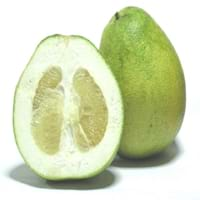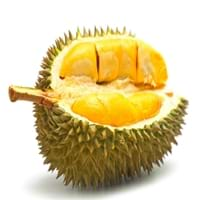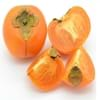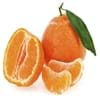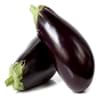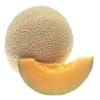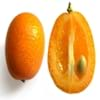Health Benefits
Cancer prevention, Heart care, Prevents Urinary Tract Infection
Anti depressant, Boosts immune system, Cancer prevention, Heart care, Reduces stress
General Benefits
Digestive aid, Fights against infections, Flu treatment, Healing of wounds, Helps in weight loss, Treatment of common cold
Anti oxidant properties, Anti-inflammatory properties, Boosts immune system, Controls blood pressure, Controls blood sugar levels, Digestive aid, Flu treatment, Strengthens bones
Skin Benefits
Anti-aging benefits, Brightens and lightens complexion
Anti-aging benefits, Brightens and lightens complexion
Hair Benefits
Promotes longer and healthier hair, Protects hair
Promotes longer and healthier hair, Protects hair
Allergy Symptoms
Abdominal cramps, Abdominal pains, Diarrhea, Lightheadedness, Nasal congestion, Nausea, Swallowing difficulties, Swelling of mouth, tongue or lips, Vomiting
Diarrhea, Headaches, Hives, Nasal congestion, Red rash, Runny nose, Vomiting
Side Effects
Allergic reaction, Dizziness, Stomach pain
Affects blood glucose levels, Nausea, Stomach pain
Best Time to Eat
As a snack in the late afternoon, Don't consume at night and before bed, Eat the fresh ones, avoid mixing with any other foods, don't eat after meal., Morning time (before lunch)
Along with meal, As a snack in the late afternoon, Don't consume at night and before bed, Morning time (before lunch)
Vitamin A (Retinol)
Not Available
Vitamin B5 (Pantothenic Acid)
Not Available
Vitamin B9 (Folic acid)
Not Available
Vitamin C (Ascorbic Acid)
Calories in Fresh Fruit with Peel
Not Available
Calories in Fresh Fruit without Peel
Not Available
Calories in Frozen Form
Not Available
Calories in Canned Form
Not Available
Not Available
Calories in Jam
Not Available
Calories in Pie
Not Available
Type
Citrus, Tropical
Tree fruit, Tropical
Season
All seasons
Monsoon
Varieties
Chandler, Cocktail, Cuban Shaddock, Hirado Buntan, Honey, Jaffa Red, Mato Buntan, Pomelit, Reinking, Siamese Sweet and Sweetie
D24, D99 (Gob kecil), D123 (Chanee), D145 (Beserah), D158 (Gan Yau), D159 (Monthong), D169 (Tok Litok), D188, D189, D190, D163 (Hor Lor) and D164 (Ang Bak)
Color
Green, Pink, Red, Yellow
Green
Inside Color
Creamy Yellow
Yellow
Taste
Juicy, Sweet
Creamy, Sweet
Origin
Malaysia, South-Eastern Asia, Thailand
South-Eastern Asia
Grows on
Trees
Not Available
Soil Type
Clay, Loam, Sandy
Clay
Climatic Conditions
Warm
Hot, Humid
Facts about
- Flowers of pomelo fruit are used to make perfumes.
- Pomelo tree wood is used for the manufacture of tool handles.
- Life of pomelo tree is around 10 years.
- Height of pomelo can be 15-20 feet.
- 1 kg of durian contains 1350 calories which may cause weight gain.
- It may have a hyperthermic effect on the body, making you feel warmer.
- Study shows that durian has an ability to reduce infertility in men & women.
Top Producer
China
Thailand
Other Countries
Argentina, India, Israel, Mexico, South Africa, Sudan, Thailand, Turkey, United States of America
Indonesia, Malaysia, Philippines
Top Importer
Europe
China
Top Exporter
United States of America
Thailand
Botanical Name
Citrus maxima
Durio zibethinus
Synonym
Citrus grandis
Lahia Hassk
Subkingdom
Tracheobionta
Tracheobionta
Division
Magnoliophyta
Magnoliophyta
Class
Magnoliopsida
Magnoliopsida
Subclass
Rosidae
Dillenhidae
Order
Sapindales
Malvales
Family
Rutaceae
Malvaceae
Species
C. maxima
D. zibethinus
Generic Group
Citrus fruit
Not Available
Difference Between Pomelo and Durian
We might think that Pomelo and Durian are similar with respect to nutritional value and health benefits. But the nutrient content of both fruits is different. Pomelo and Durian Facts such as their taste, shape, color, and size are also distinct. The difference between Pomelo and Durian is explained here.
The amount of calories in 100 gm of fresh Pomelo and Durian with peel is 38.00 kcal and Not Available and the amount of calories without peel is Not Available and 147.00 kcal respectively. Thus, Pomelo and Durian belong to and category.These fruits might or might not differ with respect to their scientific classification. The order of Pomelo and Durian is Sapindales and Malvales respectively. Pomelo belongs to Rutaceae family and Durian belongs to Malvaceae family. Pomelo belongs to Citrus genus of C. maxima species and Durian belongs to Durio genus of D. zibethinus species. Beings plants, both fruits belong to Plantae Kingdom.
